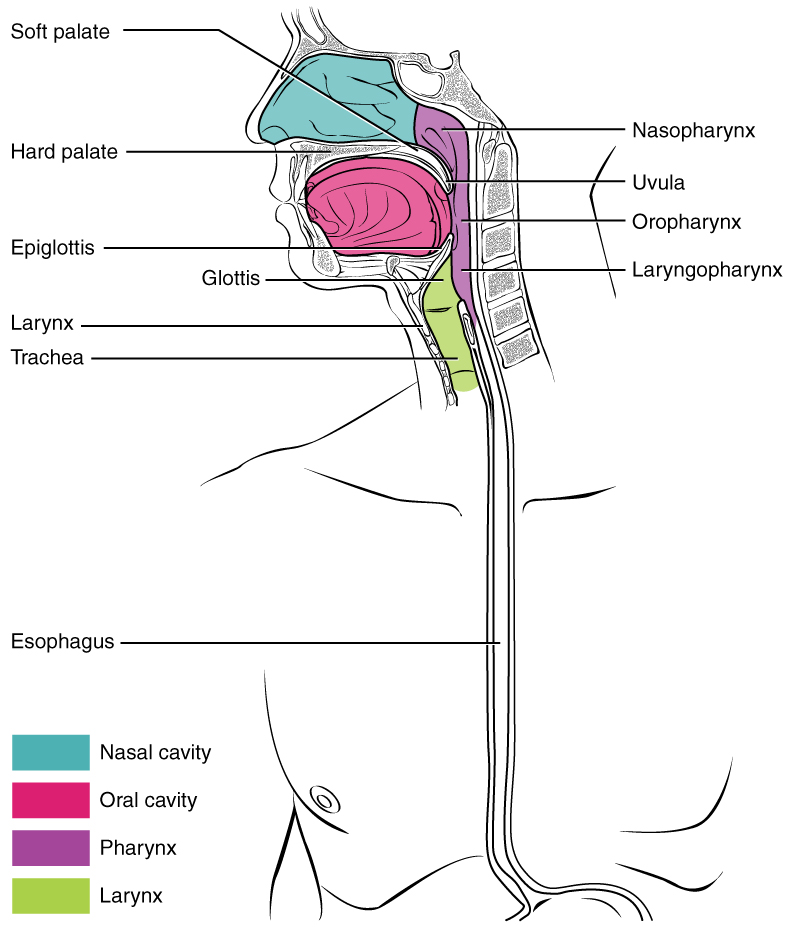6.1.2 The Anatomy of Eating
To understand the process of eating, you must first understand the physical anatomy of the structures that facilitate eating. The actions of eating and swallowing involve more than 30 nerves and muscles.
After a person takes a bite, food is continually moved by the tongue pushing upwards against the palate in the mouth allowing the teeth to chew (or masticate) particles. Then, the food passes through the oropharynx and laryngopharynx—after which the upper esophageal sphincter opens, and the food passes into the epiglottis.
See the figure below for the structures used for eating and drinking. Pay close attention to the pharynx, indicated in purple. Both food and air enter the body through the pharynx. Then, air is directed into the larynx area, indicated in green, while food continues down the esophagus into the stomach. Food is directed into the correct channel by the epiglottis—a flap that closes to stop food from entering the larynx while eating.

All muscles need to function correctly for the eating process to complete without problems of coughing, or having food pass into the airway potentially causing choking or bacteria to get to the lungs. If food enters the mouth too quickly for the person to have completed the previous bite, there may be an open airway, allowing food to pass to the lungs. Always make sure to give the client time for an unhurried meal experience.
Media Attributions
- eating anatomy © Betts, Young, Wise, Johnson, Poe, Kruse, Korol, Johnson, Womble & DeSaix is licensed under a CC BY (Attribution) license

